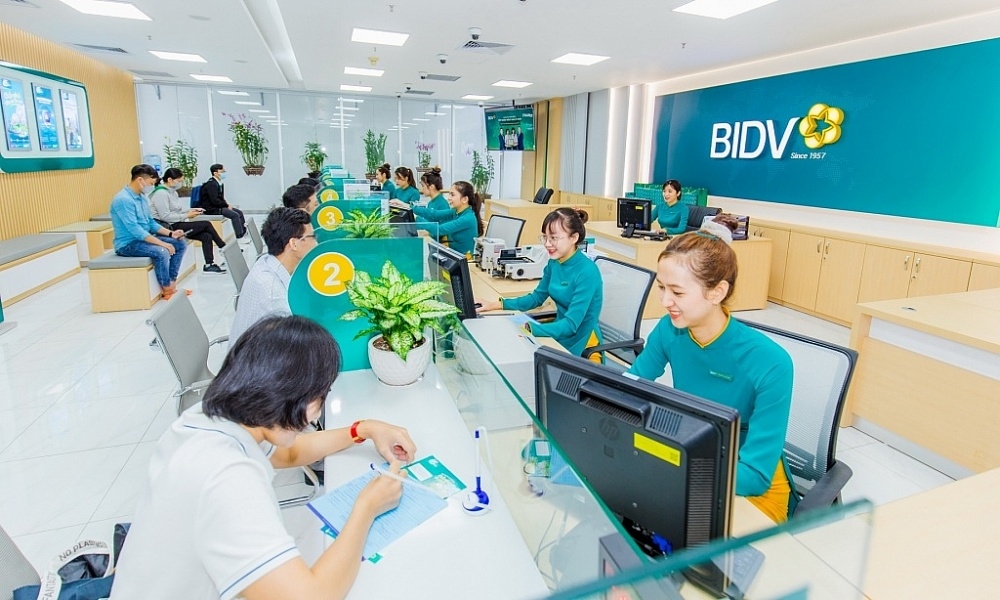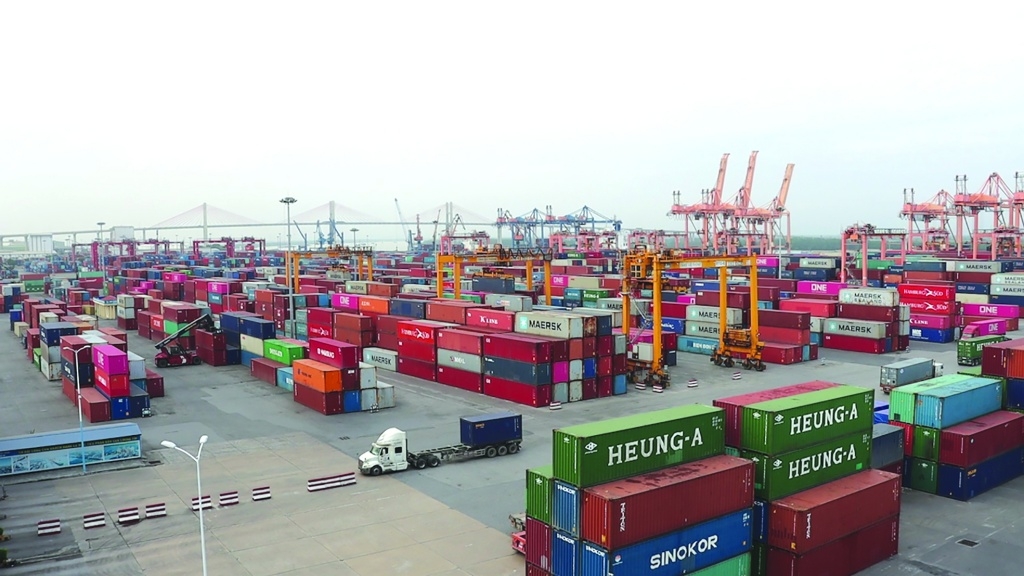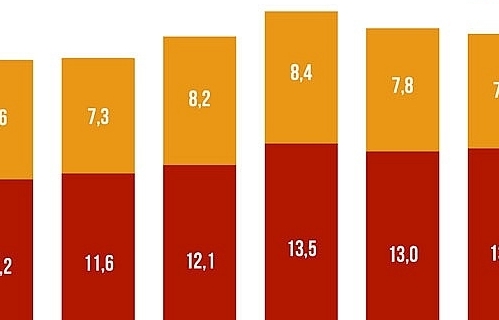Two years since EVFTA’s effectiveness: The market share of Vietnamese goods in the EU is still modest
 |
| Seafood is one of the industries making good use of the EVFTA. Photo: Internet |
Impulse for export
Speaking at the seminar "Using EVFTA to build brand names" on August 8, Mr. Tran Thanh Hai, Deputy Director of the Import-Export Department (Ministry of Industry and Trade), said: Despite the impact of Covid-19 in the past two years to the global economy as well as the Vietnamese economy, the implementation of the EVFTA has brought positive results.
According to statistics of the General Department of Customs, two years since the effectiveness of the EVFTA (August 1, 2020), Vietnam's export turnover to the EU has reached about US$83 billion, an increase of approximately 15% compared to the period before the agreement.
Most of the products exported to the EU have gained a very high growth rate, especially for some commodity groups such as iron and steel, coffee and pepper is over 200%, 75.2% and 55.8%, respectively. For traditional products that were exported to the EU since before the agreement, such as textiles and garments, shoemaking, and furniture, the growth rate is about 10-15%.
"Overall, the EVFTA is a key impulse for Vietnam's export activities," said Mr. Tran Thanh.
Assessing the sharp mind of Vietnamese enterprises in making good use of EVFTA, leaders of the Import-Export Department said in the first two quarters of 2022, the value of goods applying for a Certificate of Origin EUR.1 recorded about $5.8 billion, equivalent to about 25% of export turnover to the EU during this period.
In the EU market, besides the EVFTA, the preferential program under the Generalized System of Tariff Preferences (GSP) is also being maintained. In such a context, the rate of applying for the EUR.1 Certificate of Origin is still at 25%, equivalent to the level of many other FTAs after a few years, showing that Vietnamese enterprises are aware of the value of the agreement as well as the role of the certificate of origin.
Recognizing the positive export results achieved, Mr. Ngo Chung Khanh, Deputy Director of the Multilateral Trade Policy Department (Ministry of Industry and Trade) said that the market share of Vietnamese goods in the EU is still quite modest.
For example, the market share of Vietnamese fruit and vegetables in the EU is less than 4%; seafood is less than 8%. Rice exports to the EU are also quite low. It is necessary to evaluate the proportion of Vietnam's exports to the EU market in general and provinces and cities in particular. Even in some of the largest exporting provinces (in the “top 10”), the share of the EU market in their exports is now less than 15-20%.
“That means, Vietnam is focusing too much on the traditional market, the East Asian market. In this potential market, efficiency is not concentrated enough, and room for growth is still very large," said the leader of the Multilateral Trade Policy Department.
Challenge to meet rules of origin
In addition to the achieved results, Mr. Tran Thanh Hai confirmed that Vietnamese enterprises face the biggest challenge in technical standards, food safety, product quality and traceability.
“Not only Vietnamese enterprises only but other countries face such obstacles. Secondly, we must take consideration of the rules of origin. Especially, businesses must actively study some specific products which the rules of origin in EVFTA differ from other FTAs,” said Mr. Hai.
Another challenge mentioned by the leaders of the Import-Export Department is to build a foothold in the EU market, through brand building and positioning. This requires strategy and methodical investment, expert advice, etc., so that Vietnamese businesses can not only sell goods but also sell branded goods.
From the perspective of the export industry, Ms. Le Hang, Communications Director of the Vietnam Association of Seafood Exporters and Producers, expressed her desire to receive more support from the Ministry of Industry and Trade to guide businesses to make the best use of the EVFTA in terms of preferential tariff treatment as well as applying the best rules of origin, lifting obstacles when exporting seafood to the EU market.
“Besides, the State should invest more in science and technology for breeding animals, animal feed; strengthen solutions to take advantage of processing by-products in the seafood industry, because by-products account for about 40-50% of aquatic production and enable to raise the competitiveness of the industry," said Ms. Hang.
| The EVFTA took effect from August 1, 2020. According to calculations by the Ministry of Planning and Investment, the EVFTA is expected to contribute to an increase in GDP by an average of 2.18 to 3.25% (for the first 5 years of implementation); 4.57-5.3% (for the next 5-year period) and 7.07-7.72% (for the next 5-year period). Regarding exports, the EVFTA is expected to increase Vietnam's export turnover to the EU by about 42.7% in 2025 and 44.37% in 2030. |
Related News

“Give and Take” in the Value Chain of the CPTPP Market
09:30 | 20/12/2024 Import-Export

Vietnamese businesses struggle to access green finance
09:58 | 18/12/2024 Import-Export

Vietnam’s trade activity declines in early November despite strong year-to-date growth
10:35 | 05/12/2024 Import-Export

US trade policy is expected to be "stricter", what should businesses do?
15:50 | 02/12/2024 Import-Export
Latest News

UK a niche market for Vietnamese speciality coffee
14:11 | 23/12/2024 Import-Export

Vietnam-US trade thrives on effective mechanisms: trade counsellor
14:08 | 23/12/2024 Import-Export

Opening of overseas markets boosts coconut exports
13:59 | 23/12/2024 Import-Export

Increasing consumption demand, steel enterprises face many opportunities
11:08 | 23/12/2024 Import-Export
More News

VN faced with increasing trade defence investigations on rising protectionism
18:58 | 22/12/2024 Import-Export

Việt Nam expects to officially export passion fruit to the US next year
18:55 | 22/12/2024 Import-Export

UK’s carbon tax to affect VN exports
18:51 | 22/12/2024 Import-Export

Removing obstacles in granting certificates of exploited aquatic products
13:56 | 22/12/2024 Import-Export

Promoting agricultural exports to the Japanese market
13:55 | 22/12/2024 Import-Export

Agricultural exports in 2024 to exceed 60 billion USD?
13:53 | 22/12/2024 Import-Export

Seafood exports expected to exceed $10 billion in 2025: expert
20:28 | 21/12/2024 Import-Export

Top 10 Reputable Animal Feed Companies in 2024: Efforts to survive the challenges of nature
18:30 | 21/12/2024 Import-Export

Vietnam's import-export surges 15.3%
09:44 | 20/12/2024 Import-Export
Your care

UK a niche market for Vietnamese speciality coffee
14:11 | 23/12/2024 Import-Export

Vietnam-US trade thrives on effective mechanisms: trade counsellor
14:08 | 23/12/2024 Import-Export

Opening of overseas markets boosts coconut exports
13:59 | 23/12/2024 Import-Export

Increasing consumption demand, steel enterprises face many opportunities
11:08 | 23/12/2024 Import-Export

VN faced with increasing trade defence investigations on rising protectionism
18:58 | 22/12/2024 Import-Export




